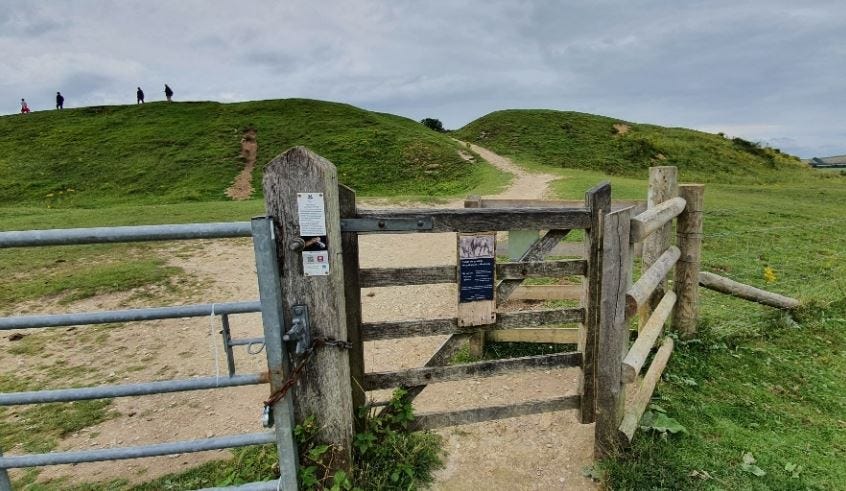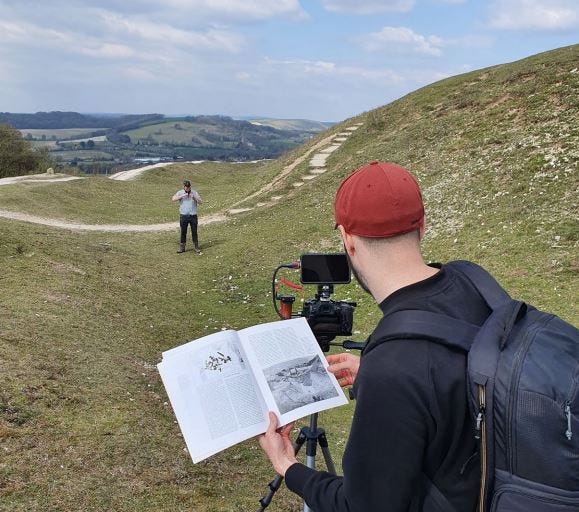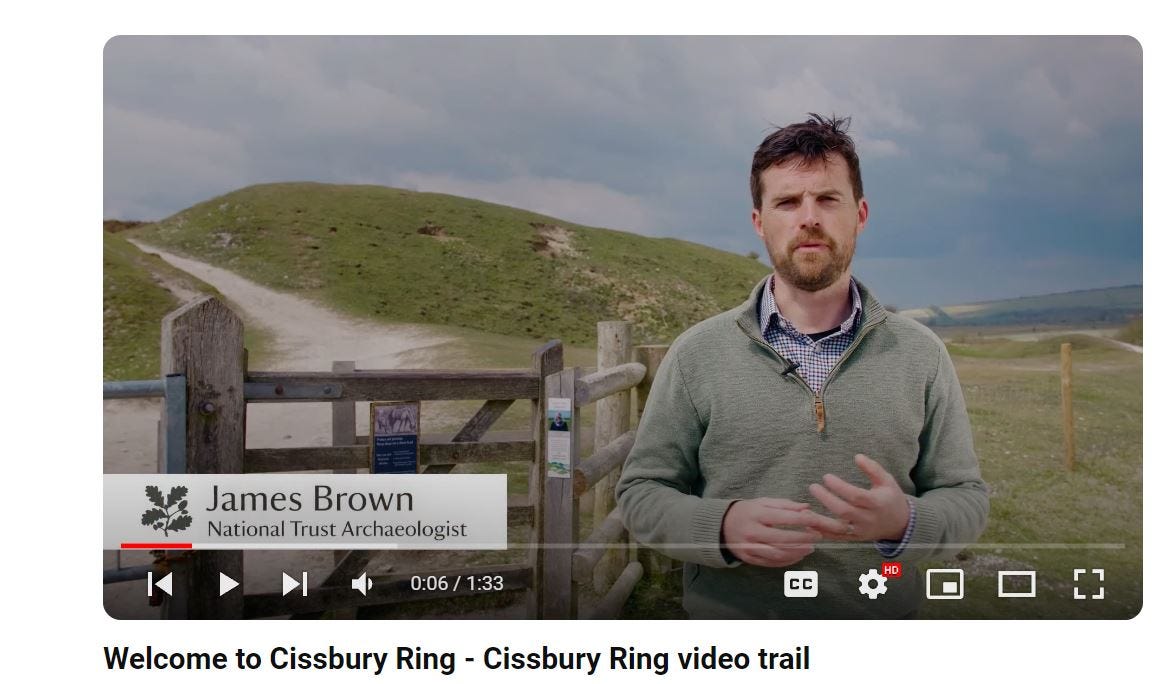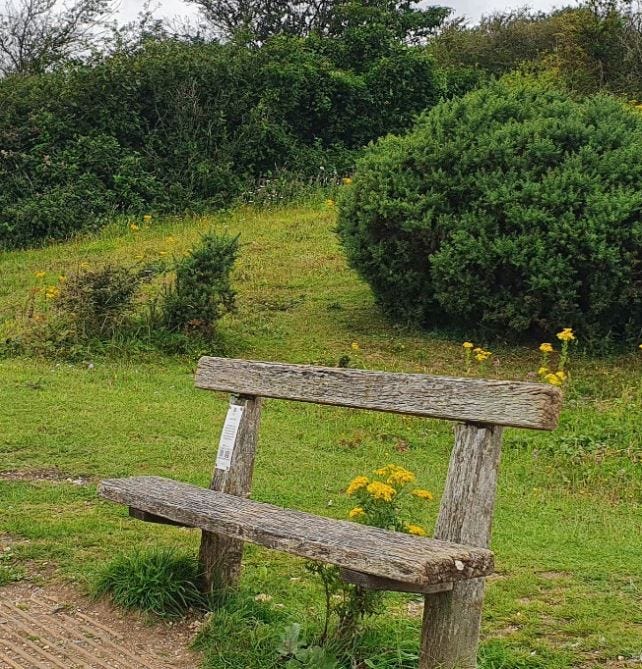How to deliver augmented reality on a limited budget – a case study
Using the humble QR code to deliver award-winning budget-friendly interpretation at Cissbury Ring
Augmented reality (AR) is one of the most exciting developments in the world of interpretation, allowing you to deliver additional layers of information through a digital device in a heritage setting without installing potentially intrusive or impractical signage.
However, it is also frequently expensive to develop and challenging to make fully compatible with the range of devices on the market.
In this article, we look at how to deliver a similar experience on a fraction of the budget using tried and tested methods. We’ll be using Cissbury Ring in Sussex as a case study.
What is augmented reality?

Augmented reality or AR is an interactive experience of a real-world environment, enhanced by a layer of computer-generated information or objects. It’s usually accessed through the camera on a mobile device with the additional information appearing on the device screen. It differs from virtual reality where the visitor is enclosed in a completely virtual world (often using a headset).
Where might I have seen examples of augmented reality?
One of the most popular examples of augmented reality is the game Pokémon Go, where Pokémon are overlaid on the real-world environment via the screen of a mobile device. Users can battle and capture said creatures.
Augmented reality is also widely used in a commercial setting. For example Specsavers allows you to test out different glasses frames and see what they would look like on your face. While DFS allows you to see what different sofas would look like in your living space.
Within the heritage sector itself, Glastonbury Abbey has created an AR experience that reveals what the abbey building looked like before it fell into ruin. And at Tamworth Castle, their AR app allows you to see ‘ghosts’ and collection objects overlaid onto rooms within the building.
The Case Study: Cissbury Ring
Cissbury Ring is a well-known Sussex landmark on the South Downs managed and cared for by the National Trust. The site has a long history of human activity, from an Iron Age hill fort through to World War Two anti-aircraft gun emplacements.
What was the challenge?
The National Trust team at Cissbury Ring wanted to find a suitable way of interpreting the complex history of Cissbury Ring.
A singular interpretation board could not do justice to the complex history and adding multiple boards could negatively impact on the monument alongside the wider experience of visitors enjoying the site for its views and nature.
It was decided that a digital solution was required.
Aim
To allow users to understand and connect with the complex history of the site.
The project and method
The project was a partnership between the South Downs National Park Authority (who funded the project) and the National Trust, with input and support from local expertise.
A series of ten short films was commissioned as part of the digital interpretation project. Each video explores a different aspect of the site’s history and lasts approximately two minutes.
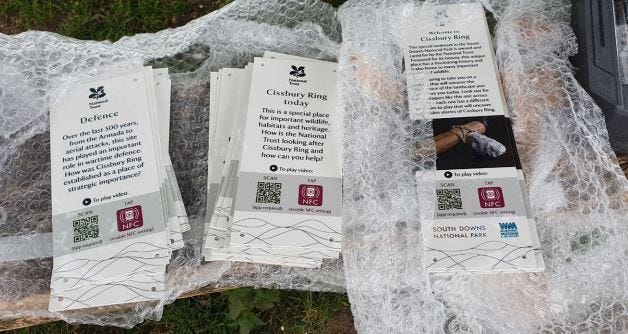
The videos are accessed via QR codes positioned on small instructional plaques attached to pre-existing infrastructure such as fences and benches (ensuring no additional interventions were needed on site). Each QR code takes the viewer through to Youtube, where the videos are hosted.
Each video was filmed on location and at the same eye line as the visitor when scanning or accessing the video. Ensuring that the presenter appears directly ‘in front of the visitor’ (via their device), explaining the landscape ahead.
This approach could be considered a low budget version of augmented reality, by delivering a digitally enhanced version of the landscape in front of the visitor through their mobile device.
Two versions of each video are stored on the National Trust’s Youtube account. The videos linked to via the QR codes are unlisted allowing for the project team to use the Youtube analytics dashboard to accurately measure views on-site.
Results
The trail was launched in the summer of 2021 and submitted for consideration in the Society for Museum Archaeology awards 2022. ‘Cissbury Goes Digital’ was selected as the winner of the ‘exhibition, display or interpretation project’.
Between September 2021 and end August 2022 there were more than 2,000 video views suggesting an appetite for interpretation at this site. The average percentage watch for all videos was over 50%, reasonable for video content where drop-off can often be high. This suggests that the formatting and length of the videos worked well and was engaging for visitors ‘on-site’.
Conclusions
By shooting video content against the same backdrop that a visitor is looking at and then delivering this content through a QR code, it is possible to deliver an augmented visitor experience similar to AR at a fraction of the price – cutting out the need to develop an expensive bespoke app or other digital solution. This solution could be implemented at a range of budgets, from filming content on your own own phone and then editing on free-to-use software, to hiring a professional video production company and using dedicated lighting, cameras and sound equipment.
This study has certain limitations. It took place shortly after the pandemic when there was a surge in QR code engagement. We will need to monitor whether QR code usage starts to decline across the sector in future years.
The test uses an outdoor space where, arguable, visitors are likely to have multiple reasons to visit, some to learn about the site, but a significant number who want to stretch their legs and enjoy being in nature and away from their mobile devices. Being an outdoor space is likely to have depreciating effect on engagement, whereas an indoor space could well receive higher levels of interaction.
To conclude, remember to consider the problem that you are trying to solve before you settle on an expensive solution such as an AR app. If you are looking solely at a way of delivering interpretation to users through their mobile devices then there are many off the shelf, cheaper and more established solutions which with a little ingenuity could deliver on your goals at a fraction of the price.
With thanks to James Brown, National Trust Archaeologist, who pulled together original evaluation of the ‘Cissbury goes Digital’ project.



